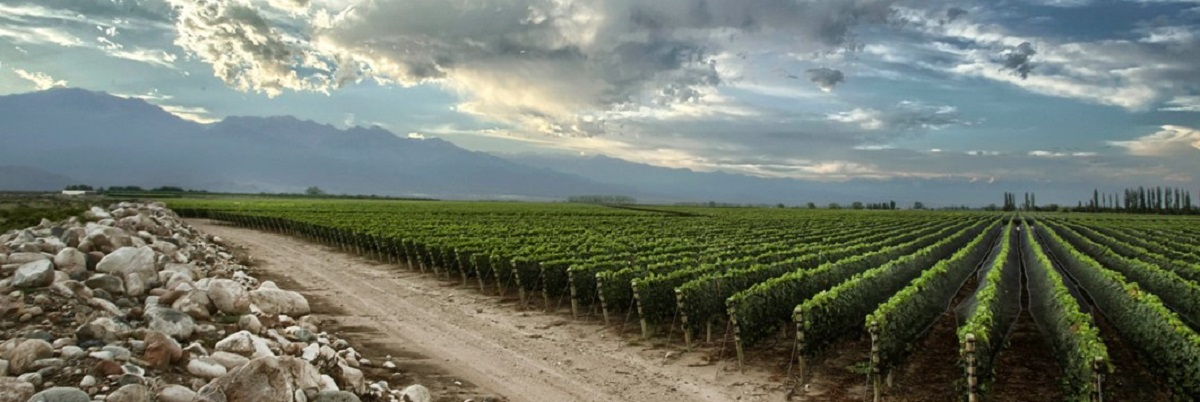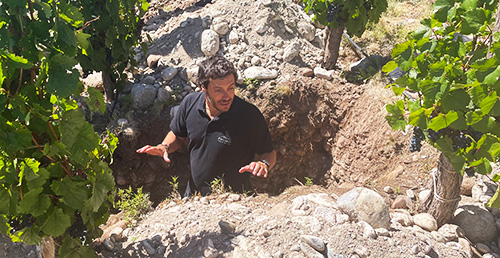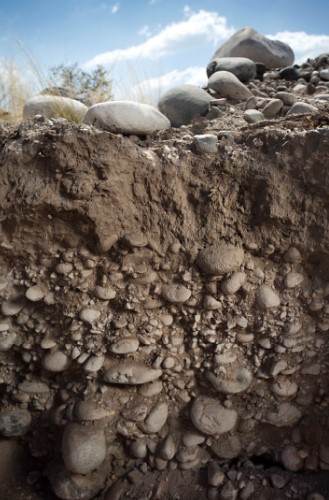
After 25 years in this business I remain fascinated by the product that we buy and sell. I’m lucky enough to taste a great deal of wine and, whilst I’m probably the most cynical member of the team, and likely the most conservative in my tastes, at least once a month I taste something that bowls me over, or something that has me questioning what the whole thing is about. It still amazes me that the simple concept of growing some grapes, harvesting, vinifying and bottling the juice, can create something that gives so much pleasure.
My cynical and conservative side says this: red wine comes from France and occasionally Italy. White wine is made from Chardonnay and occasionally Riesling. And I’ll pretty much stand by that, and can even narrow it down. There are exceptions, though, and a sample of 2019 Zuccardi Piedra Infinita – this is an Argentinian Malbec for those as myopic in their tastes as me – tasted a couple of months back got me thinking. This is a wine that comes in at a Lynch-Bages level of price, from a vineyard planted just 14 years ago. You can see the Andes, not the Gironde, from the winery.
 In late February I had the very special opportunity to visit the Zuccardi winery at Piedra Infinita and – this is the important bit – meet the man behind the wines, Sebastian Zuccardi. Sebastian is one of those rare men who just radiates energy. You could likely charge your phone up by putting it in his pocket.
In late February I had the very special opportunity to visit the Zuccardi winery at Piedra Infinita and – this is the important bit – meet the man behind the wines, Sebastian Zuccardi. Sebastian is one of those rare men who just radiates energy. You could likely charge your phone up by putting it in his pocket.
This is Sebastian on the left. Just to be sure that we understood what the terroir was all about in his vineyards in Gualtallary, he had someone dig a few holes for us before we got there.
Terroir is what drives Sebastian. He gets it. He has the nous to find it and both the vision and the financial clout to realise it. Piedra Infinita is the perfect example of what he is all about.
The vineyard of Piedra Infinita is found in Paraje Altamira. What makes the soil special is the alluvial fan of the Tunuyán River. The soil is shallow, with a subsoil of large rocks covered in limestone. The vineyard covers 42 hectares, every square metre of which has been mapped out, and planted with different varieties and clones according to the depth and make up of the subsoil. Quite some job, especially after the borderline insane amount of work that was required to plant it: the land was originally covered by huge rocks – some the size of a small car. It took 1,000 truckloads to clear these – this is the sort of commitment and drive that Sebastian has in spades.
The traditional great vineyards of the world – your Latour or your Musigny – took an awfully long time to be found and were arguably found by accident: it was the Cistercian monks who worked out that the poor soil of the Côte d’Or was rather good for vines some 1,000 years ago. The vineyards were only classified in the 1930s and you could make the argument that Burgundy has only really taken off in the past 40 years.
What Zuccardi have, and what your monks didn’t (or your Bordelais aristocrats, for that matter) is the technology to work out what good terroir is without having to work by trial and error (and you get one go every year – it takes a while). So, whilst you could say that projects like these lack heritage and /or experience, the truth is that vision, technology and a great deal of investment can take you places very quickly. If you click on the image to the right you can see the extent to which the vineyard and the subsoils have been mapped and planted. It is this sort of drive and attention to detail, combined with the vision of the man himself, that sold me.

The “straight” Piedra Infinita is very serious wine indeed and, yes, I think it’s worth the money. Sebastian’s understanding of the vineyard is clear and the winemaking is flawless. There is no new wood; the wines are vinified and aged in concrete vats, the idea being that any oak influence would detract from the purity of the wine. This is pretty much the pinnacle of Malbec though, to continue the terroir theme, Sebastian sees the grape variety as being as much of a conduit of the soil’s character as it is anything else.
Then you get to “Supercal” and “Gravascal”. These two wines come from two specific plots in the vineyard that Sebastian identified as having some special potential and, after some experimental vinifications, he was proved correct. They are just 300 or so metres apart, though are clearly different in style; they are the perfect exercise in terroir.
The 2019 Supercal and Gravascal have just been released and the quantities available are understandably very small. These wines are undoubtedly off-piste and do not have the track record of their counterparts in Pauillac or the Côte de Nuits. They are, though, very much the real deal. The Supercal is the more focussed, tighter wine to my palate, whilst the Gravascal is a little more flashy, a little less academic, if that makes sense.
The straight Piedra Infinita is not to be overlooked by any means and, as with all of Sebastian's wines, it is the purity and focus that impresses. The nature of the project is such that fully mature examples of the wines simply don't exist; my bet is that these will age impeccably and turn out very well indeed.

Finca Piedra Infinita Gravascal is as brilliant as it is daring. Entirely concrete-fermented and aged, it’s hauntingly complex stuff, with tangerine and dark berry fruit, thrilling minerality and precision, filigree tannins and a finish that lasts for over a minute. Truly world class, this is one of the two greatest young Argentinian wines I’ve ever tasted.
What a nose! Complex and brooding, yet subtle and layered. The array of aromas range from scented violets and blueberries to dried herbs and minerals. Full-bodied with racy dark cherries and blueberries on the palate. Incredibly zingy and fresh, coated by a plethora of fine, polished tannins that dissipate into the fruit. That said, this is quite assertive. Chalky finish. Long and intellectual. A little more expressive than the powerful Supercal. Drinkable now, but it will reward patience over the next decade.
The 2019 Finca Piedra Infinita Gravascal is an earthier wine with notes of graphite. It was selected from a plot within their Piedra Infinita vineyard around the beautiful winery in Paraje Altamira, where there are some 40 centimeters of soil and then the limestone-covered white and round alluvial rocks. It feels drier (despite all of them being dry) than the Piedra Infinita, which is a blend of soils, and little less refined than the Supercal that really shines in 2019. All these bottlings have achieved very high precision and purity, but somehow there is something that makes it less clean and precise than its siblings. 1,250 bottles were filled in June 2020.